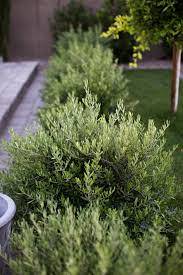How to Harvest Lovage
- Leaves and stalks: Snip or pinch off outside stalks and leaves as needed for fresh use anytime during the growing season. ...
- Roots: Harvest two or three-year-old lovage roots with a garden fork just before flowering. ...
- Seeds: Harvest entire ripe seeds heads in late summer.
- When should I prune Lovage?
- How do you trim Lovage?
- Are lovage stems edible?
- Does Lovage come back every year?
- What can you substitute for Lovage?
- What does Lovage look like?
- How do you find lovage?
- Can you divide Lovage?
- How do you use Lovage?
When should I prune Lovage?
Trim plants in summer to encourage a flush of new shoots. Plants will turn back and start to die back in autumn. At this time, cut stems back to just above ground level. Large clumps can be divided in the spring.
How do you trim Lovage?
While you don't have to prune lovage, particularly if you're harvesting the leaves regularly, it won't hurt to trim large plants a bit to maintain the shape and size. To do this, take some sharp pruners and cut the stems back to a spot just above a leaf node.
Are lovage stems edible?
Today, lovage is a favorite flavoring in Britain and southeastern Europe. It is eaten cooked or raw. The leaves are used in soups, stocks, flavored vinegars, pickles, stews, and salads. ... The stems and stalks are chopped for use in sauces and stews, while the crystallized leaves and stems are used for decorating cakes.
Does Lovage come back every year?
How irresistible is that? Two perennial herbs that I wouldn't be without are lovage and sorrel. They come up every year, survive on little attention, and are among the first plants to provide fresh green leaves in spring. They also pack powerful flavors.
What can you substitute for Lovage?
Substitute for Lovage
If you don't have lovage you can use equal amounts of fresh Celery leaves. Alternately you can substitute (for 1 cup chopped lovage) 1 cup chopped of fresh Chinese celery OR 1 cup chopped fresh celery stalks.
What does Lovage look like?
Lovage has sturdy, hollow stems, leaves that look like large Italian flat-leaf parsley and greenish-yellow flowers that are followed by golden-brown seed pods. It's a member of the Umbelliferae family, which includes carrots, parsnips, parsley and celery.
How do you find lovage?
Identification. Tussilago farfara flowers are yellow and emerge in early spring on spikes that resemble asparagus spears, 3 to 12 inches tall. The flowers resemble dandelions but are usually smaller and flatter, and can be distinguished by red scales that grow along the stem.
Can you divide Lovage?
Lovage plants have large, vigorous root systems with long, thick taproots. In late fall or early spring, these roots can be dug up to harvest and divide. In spring, dig up plants before they leaf out. When dividing in fall, cut back any remaining stems.
How do you use Lovage?
Lovage stalks, leaves, and seeds can all be used to impart its bright and fresh celery flavor. Add leaves to a mix of salad greens or let wilt in soups and stocks. Chop and use in place of parsley in chicken and tuna salad or a batch of fresh tomato salsa.
 Planetagarden
Planetagarden



